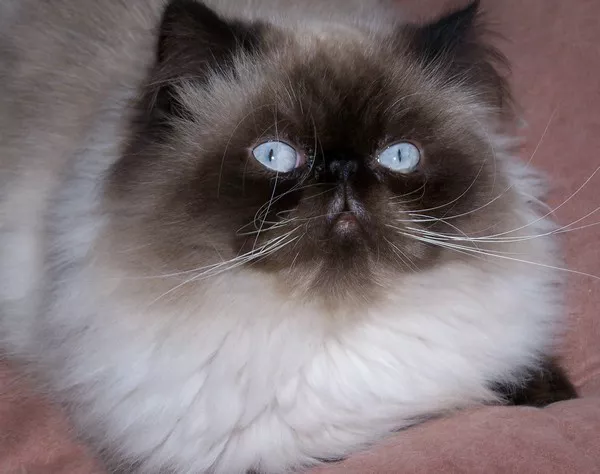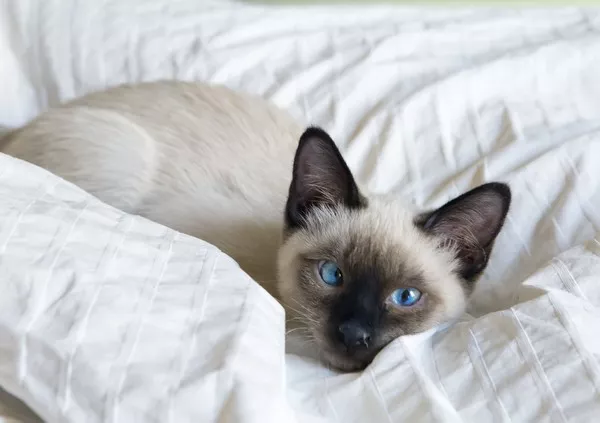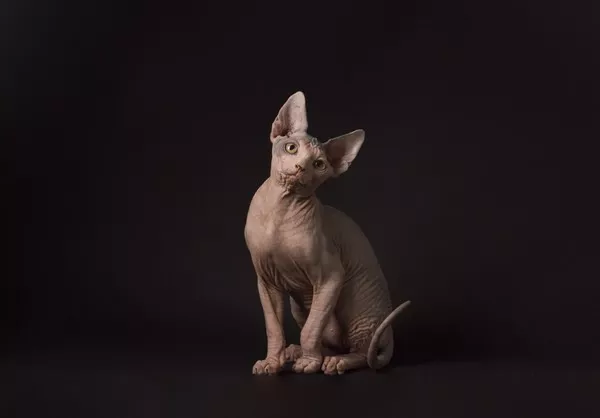Himalayan cats, known for their striking appearance and captivating blue eyes, are a popular breed among cat enthusiasts. These beautiful felines are renowned for their color points, which contrast with their creamy or white bodies. While Himalayan cats come in a range of colors, some shades are considered rarer than others. In this article, we delve into the world of Himalayan cat colors, exploring the characteristics and origins of different hues and unveiling the rarest colors found within this breed. By understanding the rarity and significance of these unique coat colors, we gain a deeper appreciation for the beauty and diversity of Himalayan cats.
The Origins of Himalayan Cats and their Color Points
a. Persian and Siamese Heritage: Himalayan cats are the result of crossing Persian and Siamese cats. The Persian breed contributes to their luxurious long coat, while the Siamese influence is seen in their striking color points.
b. Color Points Definition: Color points refer to the darker pigmentation on specific areas of a cat’s body, such as the ears, face, paws, and tail. The body color is typically lighter, creating a contrast that enhances the beauty of the color points.
Standard Himalayan Cat Colors
a. Seal Point: The seal point Himalayan cat has dark brown or black points against a lighter, cream-colored body. This color variation is one of the most commonly seen and recognized in the breed.
b. Blue Point: Blue point Himalayan cats display a soft, pale grayish-blue hue on their color points, complemented by a white or cream body. The blue points create a serene and elegant appearance.
c. Chocolate Point: Chocolate point Himalayan cats have warm, rich brown color points against a lighter, cream-colored body. The combination of brown and cream creates a visually appealing contrast.
d. Lilac Point: Lilac point Himalayan cats exhibit a light grayish-pink or pale lavender hue on their color points. This delicate and unique coloration is highly sought after by Himalayan enthusiasts.
Unveiling the Rarest Himalayan Cat Colors
a. Flame Point: Flame point Himalayan cats, also known as red point, have striking reddish-orange color points against a white or cream body. This color variation is considered one of the rarest among Himalayan cats.
b. Tortie Point: Tortie point Himalayan cats, also known as tortoiseshell point, feature a unique combination of two or more colors in their color points, often including patches of red or cream along with darker shades such as black or chocolate. The rarity of this color variation adds to its allure.
c. Lynx Point: Lynx point Himalayan cats, also known as tabby point, exhibit a distinct tabby pattern on their color points, with darker stripes or markings against a lighter background. The lynx point variation is relatively rare and adds a touch of wild elegance to the breed.
d. Cream Point: Cream point Himalayan cats display a pale cream or ivory coloration on their color points, creating a soft and delicate contrast with their body color. While not as commonly seen as some other color variations, cream point Himalayans exude elegance.
Factors Influencing Rarity
a. Genetic Inheritance: The rarity of certain Himalayan cat colors can be attributed to specific genetic factors. Inheritable traits and variations in coloration can occur due to the presence or absence of specific genes passed down through generations.
b. Breeding Practices: Breeding practices can influence the prevalence or rarity of specific colors within the Himalayan breed. Breeders who focus on preserving and promoting rare colors can contribute to their exclusivity.
c. Demand and Popularity: The rarity of certain Himalayan cat colors is also influenced by the preferences and demand among cat enthusiasts. Colors that are less common may attract more attention and interest from breeders and potential owners.
Appreciating the Beauty and Diversity of Himalayan Cats
a. Individuality and Personality: While the rarity of certain Himalayan cat colors adds to their appeal, it’s important to remember that every cat is unique and possesses its own personality traits. Coloration should not be the sole factor when choosing a feline companion.
b. Responsible Breeding Practices: When considering a Himalayan cat, it is important to seek out reputable breeders who prioritize the health and well-being of their cats. Responsible breeders focus on genetic diversity, proper socialization, and maintaining breed standards.
c. Love and Care: Regardless of coat color, Himalayan cats require love, care, and attention. Providing a nurturing environment, proper nutrition, regular veterinary care, and engaging playtime ensures the well-being and happiness of your Himalayan companion.
Conclusion
The rarity of certain Himalayan cat colors adds to the allure and fascination surrounding this magnificent breed. While seal point, blue point, chocolate point, and lilac point are the standard colors recognized within the breed, the flame point, tortie point, lynx point, and cream point variations are considered rarer and more exclusive.
Understanding the origins, genetics, and factors influencing the rarity of Himalayan cat colors allows us to appreciate the beauty and diversity within the breed. However, it’s essential to remember that a cat’s coat color does not solely define their personality or worth as a companion.
When welcoming a Himalayan cat into your home, prioritize responsible breeding practices, provide a loving and nurturing environment, and offer the care and attention they deserve. By embracing the unique qualities of Himalayan cats, regardless of their coat color, you can form a deep bond with these captivating feline companions and experience the joy they bring to your life.























